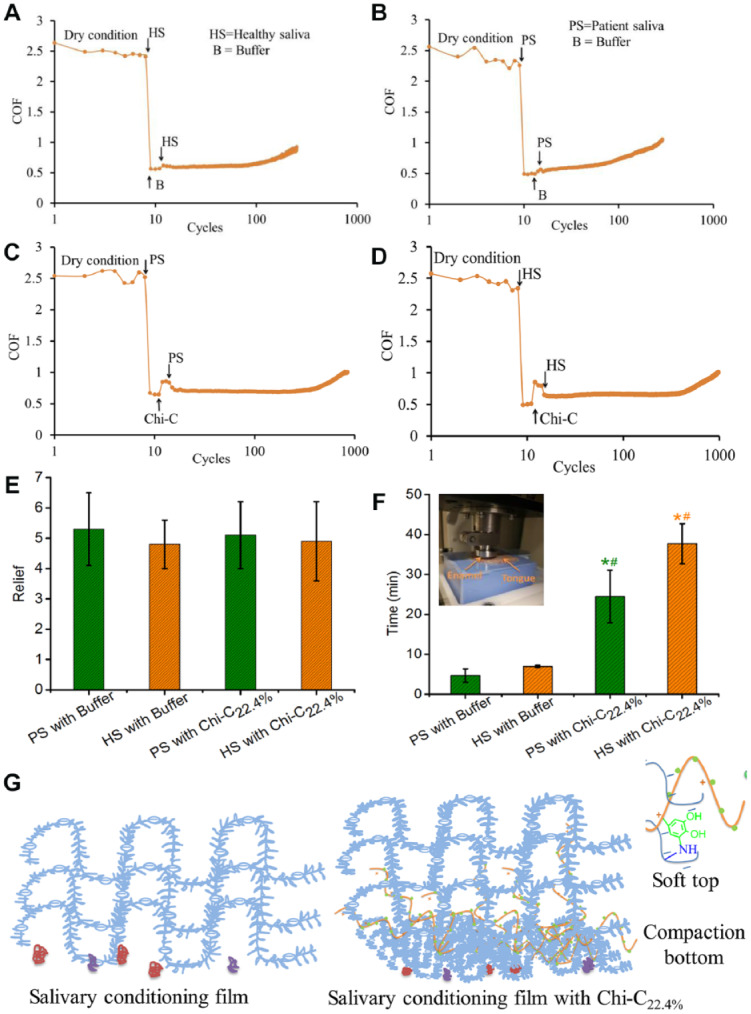Figure 3.

Relief and relief period of the secondary salivary conditioning film (S-SCF) with patient saliva (PS) and healthy saliva (HS) in an ex vivo tongue-enamel friction system. The stimulated saliva from 4 healthy volunteers (a flow rate of 3.36, 1.76, 1.04, 1.02 mL/min) and 4 patients with Sjögren syndrome (an etiology of xerostomia) with a reduced flow rate (0.48, 0.72, 0.45, 0.98 mL/min) was collected to transfer this strategy to a real biological tissue at macroscale. (A) Healthy S-SCF treated with buffer and (B) patient S-SCF treated with buffer. (C) Patient S-SCF and (D) healthy S-SCF treated with Chi-C22.4%, respectively. (E) Relief induced by patient and healthy S-SCF with buffer and Chi-C22.4% treatment. (F) Relief period of patient and healthy S-SCF with buffer and Chi-C22.4% treatment. (G) Schematic of Chi-C interaction with salivary mucin and forming a softer S-SCF. Error bar represents the standard deviation over 3 independent measurements. *Statistically significant (P < 0.05, 2-tailed Student’s t test) differences in relief period of healthy S-SCF with buffer and healthy S-SCF with Chi-C22.4% and patient S-SCF with Chi-C22.4% with respect to patient S-SCF with buffer. #Significant differences in relief period of healthy S-SCF with Chi-C22.4% and patient S-SCF with Chi-C22.4% with respect to healthy S-SCF with buffer. Chi-C, chitosan-catechol.
